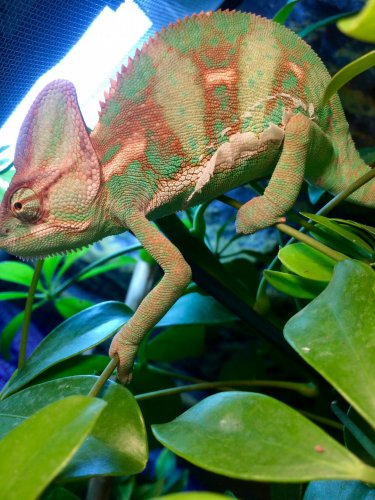Anastasia_k
Member
I read on one blog that it's possible to keep females from laying infertile eggs by keeping a certain diet and lower temperatures. This sounds great as I'd like my baby to not have this stress and live a longer life, and reduce health risks such as egg binding. She is only 4 months now and hadn't been gravid yet, please let me know from which age she can start laying, so I can prepare in advance. Does anyone have experience with this method of reducing or stopping egg laying completely? Are there any risks or downsides to it? I wonder if it's so great and healthy for the female why isn't everyone doing it? Also, which temperature should she have in her enclosure now? It is currently 24 C (75F) far from the basking spot. She rarely goes to the basking branch during the day by the way and prefers to sleep on it at night. Should I keep the basking lamp on during the summer? It gets pretty hot here these days, up to 33 C. And another thing, I'd like to get her a nice tall terrarium when she gets bigger, over 1 meter tall, maybe 120 cm. The maximum size I've seen in shops is 90 x 60 x 40. Do you know any websites where I can order it and which deliver to Europe? My chameleon currently has a 40 x 40 x 40 cm glass exoterra terrarium with screen top but will need a bigger one soon I guess. I've read that many people recommend fully screened cages so I'm considering this option, however I live in Central Europe and the air is really dry here, in her current enclosure with live plants, dirt substrate (just good old dirt, no coconut, pebbles, bark or anything else that could cause problems if ingested) and heavy misting 3 times a day I manage to keep humidity to around 60% at daytime and up to 80 at night. I'm not sure if it's possible to keep it humid in a screen cage in my climate. Also, in winter it gets pretty cold here, even with central heating, and obviously I need to open windows once in a while to let some air in, so I'm afraid she can get cold and sick. Please let me know if you have experience keeping chameleons in Central Europe climate ( she is a veiled by the way). Sorry for writing so much in one post, I am new to this and have so many questions, but didn't want to create 3 more separate threads. I would really appreciate some advice on any of the above 




